- Home
- James A. Michener
The Bridge at Andau Page 3
The Bridge at Andau Read online
Page 3
The meetings started simply enough on October 19, 1956, when informal bands of Buda and Pest students met to announce their solidarity with the students who were then revolting in Poland against their Russian masters. Since there had always been a friendly interest in Polish affairs, and since the riots at Poznan had led many students to think that perhaps Hungary could also throw off the Soviet yoke, these meetings were inevitable and the young law student Istvan Balogh naturally participated in them.
His behavior caught the eye of his fellow law students, and on October 21 they nominated him to be their representative at talks which were going to be conducted by students from all the schools of higher learning in Budapest. These young men were concerned with several burning problems: (1) get the Russians out of Hungary; (2) improve living conditions; (3) provide more economic goods; (4) stop the forced teaching of Russian; and (5), a point very close to their hearts, re-establish the old crest of Louis Kossuth, the leading Hungarian patriot of the revolutions of 1848, as Hungary’s national emblem, in place of the universally detested hammer and sickle of Soviet Russia.
On October 22, Istvan Balogh, not yet aware that he was going to help launch a climactic revolution against communism, went across the Danube to the Technical High School in Buda, where by noon a brilliant group of communist intellectuals had gathered. They set immediately to drawing up a list of grievances, and a public meeting was announced for three o’clock that afternoon. Balogh was astonished when he got there to find hundreds of young people, including workers from Csepel, waiting to applaud the work his committee had done. He recalls, “It was the first time I realized that people were going to take seriously what we had written.”
But his excitement subsided when speaker after speaker rose and made stiff, formal comments. Balogh thought, “Nothing will happen. In a way, that’s a relief.”
But toward evening a man who has never been identified rose from the rear of the audience and said powerfully and simply, “I would like to ask one question. Under what right are Russian troops stationed in our country?”
Immediately the meeting exploded. Students leaped to their feet and shouted, “Out with the Russians! Out with the Russians!”
Others whistled and yelled, and under this impulse the speakers became inflamed and began to deal with the sad tyranny that had been forced upon them. Istvan Balogh, caught up in the patriotism of the moment, found himself shouting from the rostrum, “Russia must leave Hungary!”
Thus inspired, the audience began asking probing questions which up to now the AVO had kept suppressed: “Why does Russia steal all our valuable uranium and give us nothing in return?” “Why cannot a man earn enough to live on?” “Why can’t we read western books?”
When the flood had subsided, Istvan Balogh’s committee began drawing up a series of questions it wanted the communist government to answer. The fourth item became the one that motivated all students from that moment on: “When will the Russian troops leave Hungary?”
When the protests had been codified there was a moment of quietness, during which a man in rough clothes rose from another part of the hall and said haltingly, “I don’t have the good language you men have. I’m a worker from Csepel. But what I’ve heard tonight makes my heart beat faster. You are doing good work. Men like me are with you.”
This was the encouragement Balogh needed. He made a motion which carried unanimously, that on the following day, October 23, a public meeting of sympathy would take place at the statue of General Jozsef Bern, the Polish volunteer who in 1848 had supported the Hungarian revolution against the Hapsburgs, who had called in volunteers from Russia. Then the chairman declared the meeting ended.
That night Istvan Balogh returned to his quarters in Pest in a state of great excitement. “What will happen if the AVO had spies in that meeting?” he kept asking himself. Then he tried recalling what bold and thoughtless things he had shouted from the platform. “I’m a communist,” he said to himself. “Russia is our friend, and if we leave her friendship, the fascists will take over again.” He concluded that his wild night was all a wretched mistake. “What we want,” he said, “is merely a few changes. Say, more food and things like that.”
But next day this faithful young communist was caught up in a powerful whirlpool of popular feeling. At the Jozsef Bern statue there appeared not a handful of students but more than fifty thousand patriots. The excitement of the crowd was infectious, and Istvan found himself shouting again, and meaning it, “The Russians must go!”
That evening, somewhat against his better judgment, he became part of an even larger crowd assembled at the square in front of Parliament. Here, with one of the most graceful buildings in Europe looking down from its noble position on the banks of the Danube, more than eighty thousand Hungarians had met to beg for political justice. Istvan noticed hundreds of new flags—the old communist flag with the red crest of Soviet communism ripped out. He saw men wild with fervor for Hungarian independence and heard women shouting, “Down with our leaders! Long live freedom! We want Imre Nagy!”
Istvan heard this last cry with hope, for Imre Nagy was a faithful communist, one who had known power a long time but who almost two years ago had been deposed for being too liberal. With Imre Nagy in power, Hungary would know more freedom, but it would still remain a good communist nation.
He was astonished, therefore, when Imre Nagy appeared on the balcony of the Parliament buildings and addressed the crowd, “Dear comrades!” The crowd screamed a violent protest.
“We’re not comrades! Don’t use that term on us.”
Accepting the rebuke, old-communist Nagy started over, “Dear friends.” The crowd shouted its approval, and Istvan Balogh retreated into a kind of stupor as he heard Nagy make one concession after another. It was shocking to hear an old communist make such a surrender. “What’s happening?” Balogh asked.
A chant sprang up among the people, a phrase from an old Hungarian poem, “Now or never! Now or never!” and amid this passionate rhythm Imre Nagy held up his hand for silence. Then, to the delight of the crowd he voluntarily began, in a trembling voice, the Hungarian hymn, long forbidden by communist edict: “God bless Hungary.”
In exaltation the crowd began to fan out over Budapest, but as they left, an ominous word reached them: “There has been shooting at the radio station.” Istvan thought that the AVO had probably had to subdue a group of rioters, but more news arrived, exciting news; “Students and workers are destroying the AVO.”
In a wild rush, patriots started running toward the radio building. Others, including thin, dark-eyed Istvan Balogh, worked their way toward Budapest’s largest gathering place, Stalin Square, at the southern edge of the main park in Pest. There, in the flare of torches and automobile lights, Istvan found thousands of people chanting slogans against the Russians. He was surprised that the general hatred of the common people was so openly expressed, and he began to wonder if perhaps what they were shouting to one another was not true.
“The Russians steal our uranium!” was a major chant.
“They tell the AVO to persecute us!”
“The Russians starve us.”
Balogh was thinking about these things when he spied two young men climbing high toward the top of the massive metal statue of Josef Stalin. They were trailing light ropes, and when they reached the top they used these ropes to pull up a heavy cable, which they attached to the head of the statue. The crowd roared its approval, and as the two young men scrambled down, hundreds of hands started pushing against the statue, while powerful workmen pulled on the cable. Masses of people watched intently.
They were to be disappointed. The Russians had made Stalin of such thick iron that he could not be pulled down, and women began to beat upon the ugly statue with their fists, until three young workers appeared with a more effective protest. They had acetylene torches, and the crowd set up a great shout of approval as these torches cut into the back part of Stalin’s knees. Now the other workers pull
ed mightily and the monstrous giant began to incline forward like a skater falling slowly on his face. The metal at the knees began to crack, and some young men jammed a crowbar into one joint and swung up and down.
Slowly, through the October night air, this expensive statue, which the people of Hungary had paid for, bent from its pedestal until at last, with a swift rush that was greeted with mad cheering, the dictator pitched headfirst into the public square.
Then, from far back in the memory of Hungarians who watched the dismantling of this proud statue of their oppressor, came a recollection of what this great Stalin Square had originally been. Automatically the crowd began to chant, “We want our church back! We want our church back!”
Suddenly Istvan recalled that in this square had once been a basilica. He had seen it as a boy, when his peasant mother had brought him to the park. Once there had been a church here. Now there was this fallen statue of Stalin. “We want our church back!” chanted the older people in the crowd.
What happened next amazed Istvan Balogh. The people stopped chanting for their lost church and rushed in toward the fallen idol and began spitting at it. Men and women who had suffered under the Stalin rule had a momentary revenge when they were able to defile the fallen monster.
“Roll him over, so we can spit in his face!” people shouted.
“Stop pushing, old woman. Everyone will have a chance. You must take your turn.”
A workman appeared with a mallet and began banging at the metal. “We’ll melt him into bullets,” he said. But he was pushed away by the triumphant Hungarians, who insisted upon spitting at the fallen Soviet dictator.
“You can all come back tomorrow,” a student announced, as he pushed the crowd away from Stalin’s head. He had a rope, and Istvan recognized him as a fellow law student.
“What are you doing?” Istvan cried.
“We are going to give the great robber a ride,” the law student replied.
When a truck backed up, the rope was lashed to it, and Istvan leaped aboard. Up Stalin Square the driver went, with ugly Josef Stalin grinding along behind. Down Stalin Street toward the center of town went the gruesome procession, with the metallic dictator—a giant of a statue, even though he had broken off at the knees—clanking along to the curses of the people.
At the main boulevard that circles Budapest, the truck turned south, and Istvan Balogh found himself cheering with intense fervor and shouting to the crowds, “We have done for the great robber.”
Where the boulevard crosses Rakoczi Street this humiliation of Josef Stalin ended, but perhaps a greater began, for a group of students had massed before the curious tier of iron balconies marking the offices of the communist propaganda newspaper, Szabad Nep (Free People). Here a major riot was in progress as young people began an assault on Budapest’s major propaganda press. Their hatred of the lies they had been served so long became so intense that the building itself was torn at by bare hands.
Now Istvan Balogh, the good communist, the one chosen for preferment, joined his people wholeheartedly in their fight against the lies and oppression of communism. Next to the Szabad Nep offices, which were rapidly becoming a complete ruin, were the big windows of the official salesroom for communist propaganda, the Szabad Nep bookstore. Here some university students, fed up forever with the trash which the store had sold them, had broken the windows, knocked in the door, and were tossing all the communist rubbish into the street.
With vigor Istvan Balogh joined the crowd, helping pitch out the hateful books and looking on approvingly as a workman from a truck poured gasoline over the pile and set it ablaze. For five hours Istvan Balogh and the other students, men dedicated to books, helped in burning the communist propaganda.
From time to time Istvan had a sickening feeling. To be burning books! But then, in the wild light of the fires he would see the ugly face of Stalin as it lay in the gutter, leering up in metallic wonderment. And he kept on pitching books onto the fire until his arms were tired.
Istvan Balogh was no hero, no flaming patriot fighting for Hungary’s freedom. It was partly by accident that he defected from communism, and being a most intelligent young man, he knows that had circumstances been different his actions would have been different too. Pressing a hand over his black hair, he confesses, “If the riots had not occurred, I would still be a communist willing to support a regime whose horror I never admitted to myself. I would guide my life by my fear of the AVO, and I would accept as much of the favoritism and graft as I could get hold of.” Then he drops his hands and says, “I am still amazed that in the street fighting I helped destroy Russian tanks.” Listening to him, you feel that only bad luck caused the Russians to lose their prize pupil, Istvan.
But luck did not enter into the case of the young intellectual Peter Szigeti, a handsome, polished young man of twenty-seven. He studied communism from the inside, coldly, analytically, and although the system had rewarded him with fantastic wealth and power, he finally decided that it was bankrupt, cruel and a crime against Hungary.
“From the age of sixteen,” he says, “I was a devoted communist. My parents were starving peasants and one day I stumbled upon the writings of Karl Marx. His ideas struck me like a whip and made everything clear. Then, in 1946, a communist talent-searching party came to our village and heard about me.
“They talked with me for a long time and were amazed that I knew more about the theory of communism than they did. They said, ‘You are exactly the kind of man we want.’ They arranged for me to go to school, but the teacher said I already knew enough, and I was taken right into the party as one of the youngest members.
“I made a rather great career,” Peter says in excellent English. “I was trained for foreign service … that’s the best plum of all, and from the age of eighteen I was exhibited as a prize communist youth. I served for several years on the central committee for all communist youth organizations. At the age of twenty the organization decided that I had passed the tests for foreign service, and from then on I was known as a young man who might eventually be sent overseas. I had everything I wanted.”
The life of such a young man was most appealing. He was given spending money, allowed to read foreign books, kept informed of what was happening in the world, and given a large clean place in which to live. Since Szigeti was one of the first sons of peasants to accomplish so much, he had particular privileges, and it was apparent that all this would continue indefinitely, so long as he kept in the good graces of the AVO.
But when the revolution against communism came, Peter Szigeti not only joined it. He led it. How this happened is difficult to explain.
“It started, I think,” he reflects, “when I first realized the tremendous gap that existed between the promises the communists made when they were trying to gain power, and what they actually did when they had it. Communist slogans always sound good when the reds are trying to take over a nation.”
Szigeti, an acute young man, looks like the stereotype of a communist. He has piercing eyes, eyebrows that meet far down the bridge of his nose, a wiry build, a sharp tongue, a dedication in his entire manner. Unfortunately for his career as a communist, he also has a sense of humor.
“I began in secret to make lists of the lies we told the people. First, ‘Capitalism works by chance, but communism works by plan.’ You would be amazed at how hit-or-miss our programs were. Whole areas would go without food because we made a wrong guess. Plan! We didn’t even study the available figures.
“Second, ‘Capitalism grinds down the worker, communism exalts him.’ I quickly learned that the very worst thing to be in a communist state is a worker. It’s better to be a dog. The worker gets nothing but big promises. I always told workers, ‘You are the saints of communism.’ But I noticed that it was people like me who kept hold of the goods and the food.
“Third, ‘Capitalism has no soul, but communism brings to everyone a richer life.’ The fact is that communism presses a man into an ever-narrowing world. I
t drives you into a petty, confined little Russian world. Hungary’s once vital connections with all of western culture were destroyed. We had to read Russian books, see Russian plays, study Russian philosophy. The worst crime communism committed in Hungary was the confinement of our great, free, searching soul.
“I could go on for hours repeating the discoveries I made, and I used to laugh at them. But there was one”—and Szigeti’s lean face grows very hard—“about which I could never laugh. We told the people of Hungary, ‘You are blood brothers to the great Soviet Republic of Russia. Together we will stand against the world.’ But I saw that it was not a brotherhood in which we were involved, but slavery.
“In the riots Hungarians shouted, ‘Give us back our uranium. Give us back our diesel engines. Give us back our food.’ These were not empty cries. These were the truth.”
Peter Szigeti’s hands clench as he recalls the cynical betrayal of his people, their delivery as bound slaves to the Russians. I was so impressed by his testimony that I have taken great pains to document what he said. So far as I can tell, from hundreds of interviews, the following facts are true.
“Take a workman, like one I know. He works 331 hours a month. For this he gets 1,053 forints. That’s about $21 a month American money at the actual rate of 50 forints to the dollar. Now a suit of clothes costs him 980 forints. That’s nearly a month’s pay. Suppose we take an American worker who gets time and a half for overtime. If he worked 331 hours a month, he’d make around $700. That means that under communism his suit of clothes would cost him about $680. I understand American workmen can buy them for about $50.
“Under communism a young couple cannot live unless each works ten hours a day. The price structure is kept so high that they can afford nothing, even with such slave hours. As a communist leader I was able to make my purchases at special stores where the reduction was sometimes seventy per cent. The working people ate little and wore less.

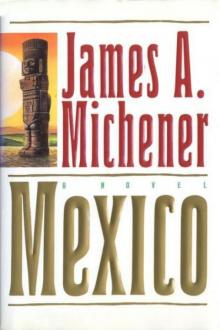 Mexico
Mexico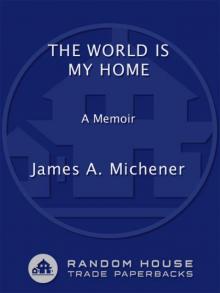 The World Is My Home: A Memoir
The World Is My Home: A Memoir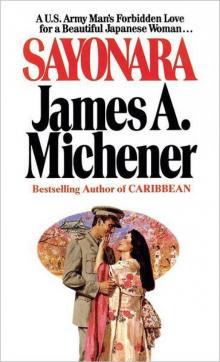 Sayonara
Sayonara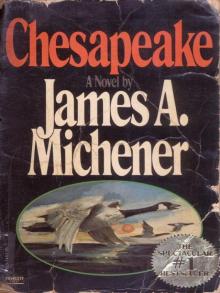 Chesapeake
Chesapeake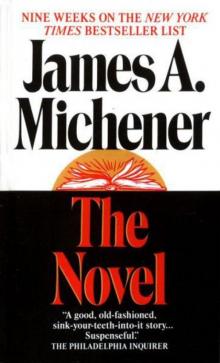 The Novel
The Novel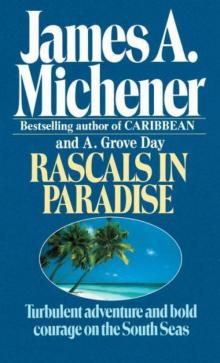 Rascals in Paradise
Rascals in Paradise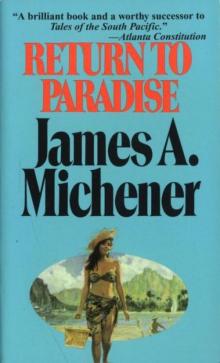 Return to Paradise
Return to Paradise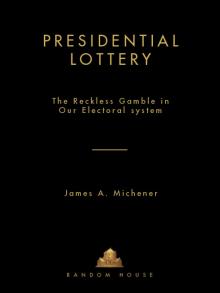 Presidential Lottery: The Reckless Gamble in Our Electoral System
Presidential Lottery: The Reckless Gamble in Our Electoral System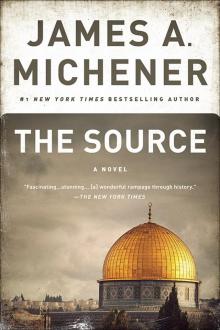 The Source
The Source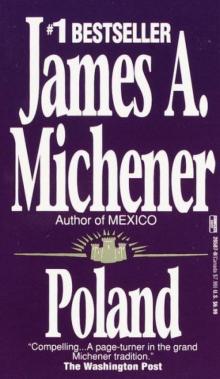 Poland
Poland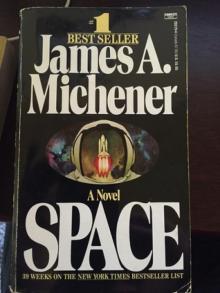 Space
Space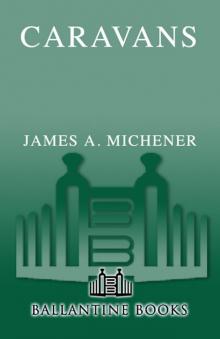 Caravans
Caravans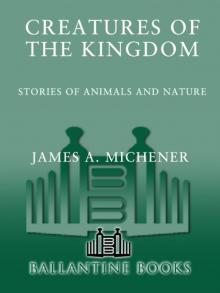 Creatures of the Kingdom: Stories of Animals and Nature
Creatures of the Kingdom: Stories of Animals and Nature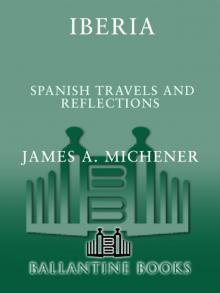 Iberia
Iberia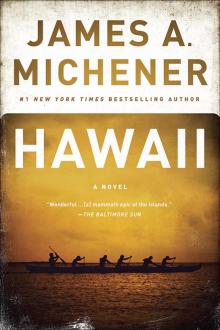 Hawaii
Hawaii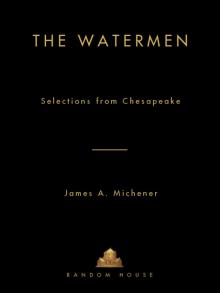 The Watermen: Selections From Chesapeake
The Watermen: Selections From Chesapeake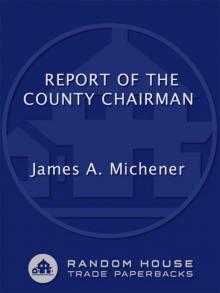 Report of the County Chairman
Report of the County Chairman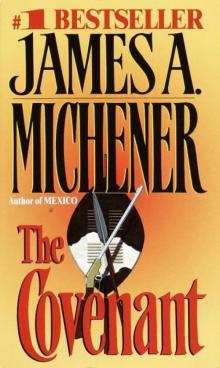 The Covenant
The Covenant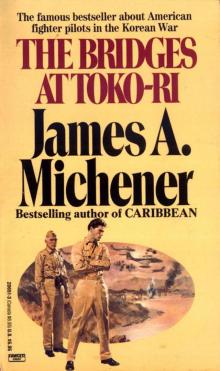 The Bridges at Toko-ri
The Bridges at Toko-ri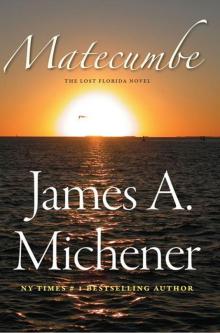 Matecumbe
Matecumbe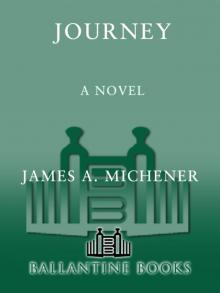 Journey: A Novel
Journey: A Novel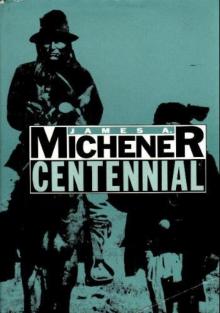 Centennial
Centennial Sports in America
Sports in America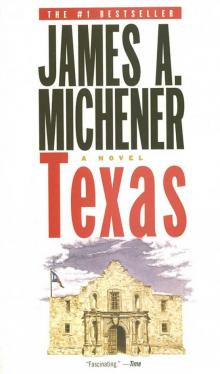 Texas
Texas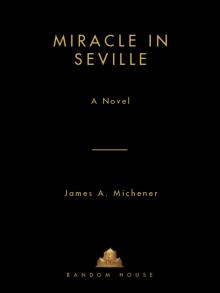 Miracle in Seville
Miracle in Seville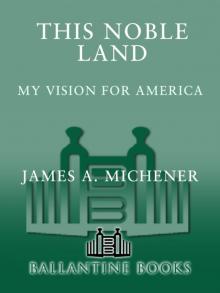 This Noble Land: My Vision for America
This Noble Land: My Vision for America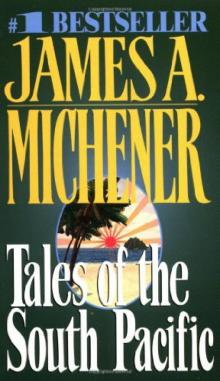 Tales of the South Pacific
Tales of the South Pacific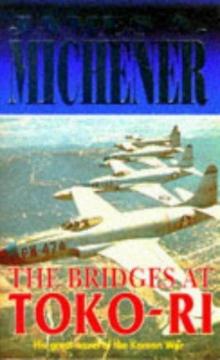 Bridges at Toko-Ri
Bridges at Toko-Ri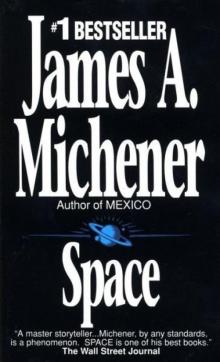 Space: A Novel
Space: A Novel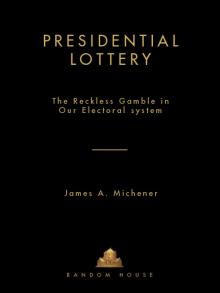 Presidential Lottery
Presidential Lottery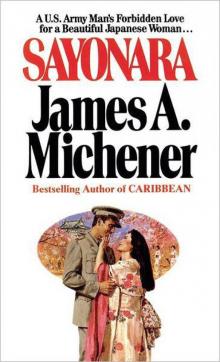 Sayonara: A Novel
Sayonara: A Novel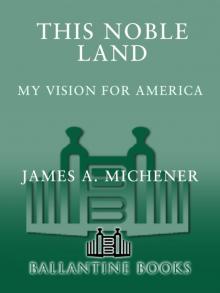 This Noble Land
This Noble Land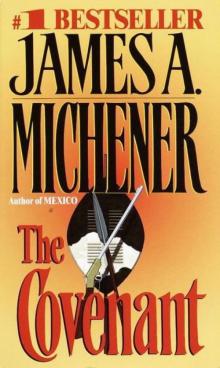 The Covenant: A Novel
The Covenant: A Novel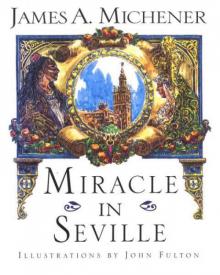 Miracle in Seville: A Novel
Miracle in Seville: A Novel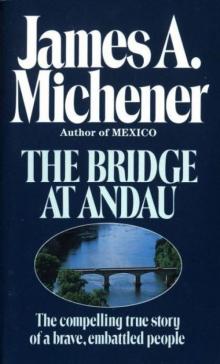 The Bridge at Andau
The Bridge at Andau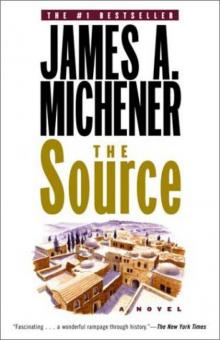 Source
Source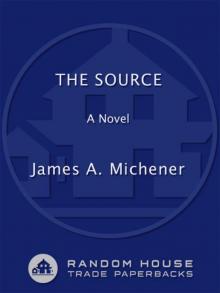 The Source: A Novel
The Source: A Novel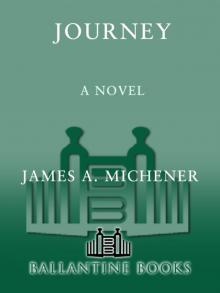 Journey
Journey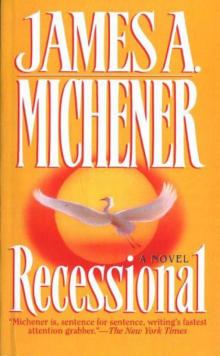 Recessional: A Novel
Recessional: A Novel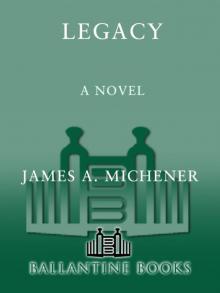 Legacy: A Novel
Legacy: A Novel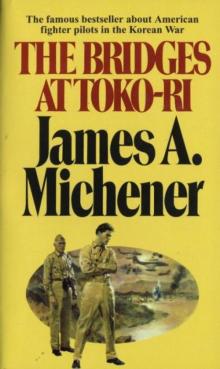 The Bridges at Toko-Ri: A Novel
The Bridges at Toko-Ri: A Novel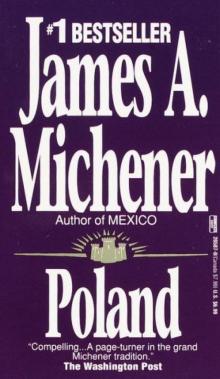 Poland: A Novel
Poland: A Novel